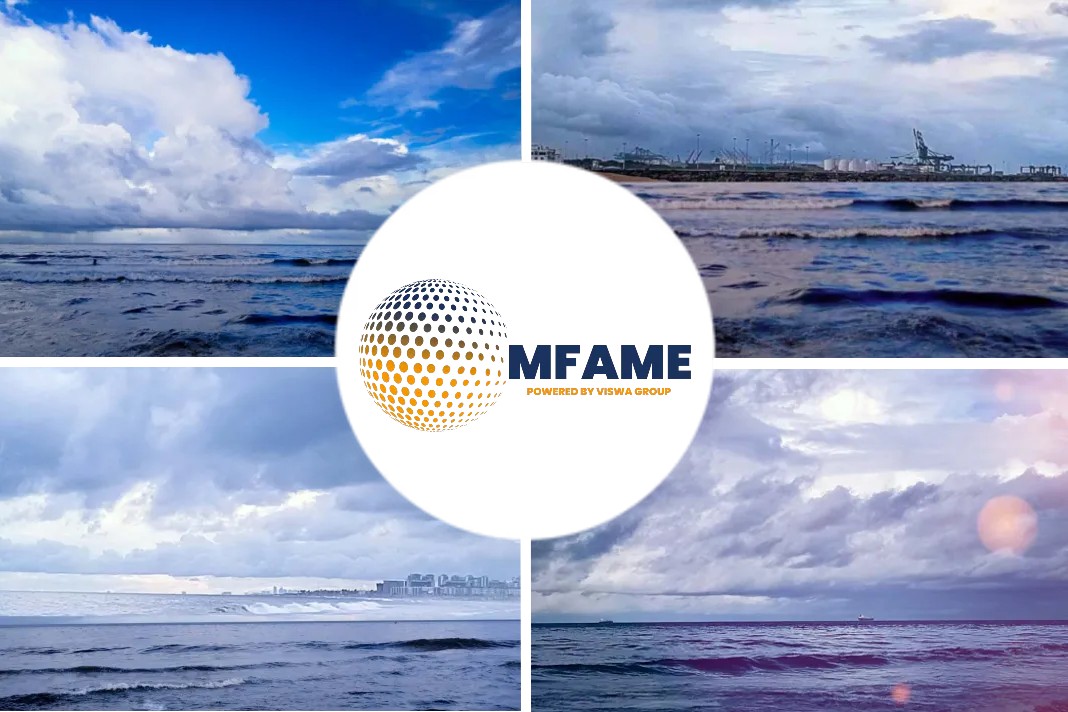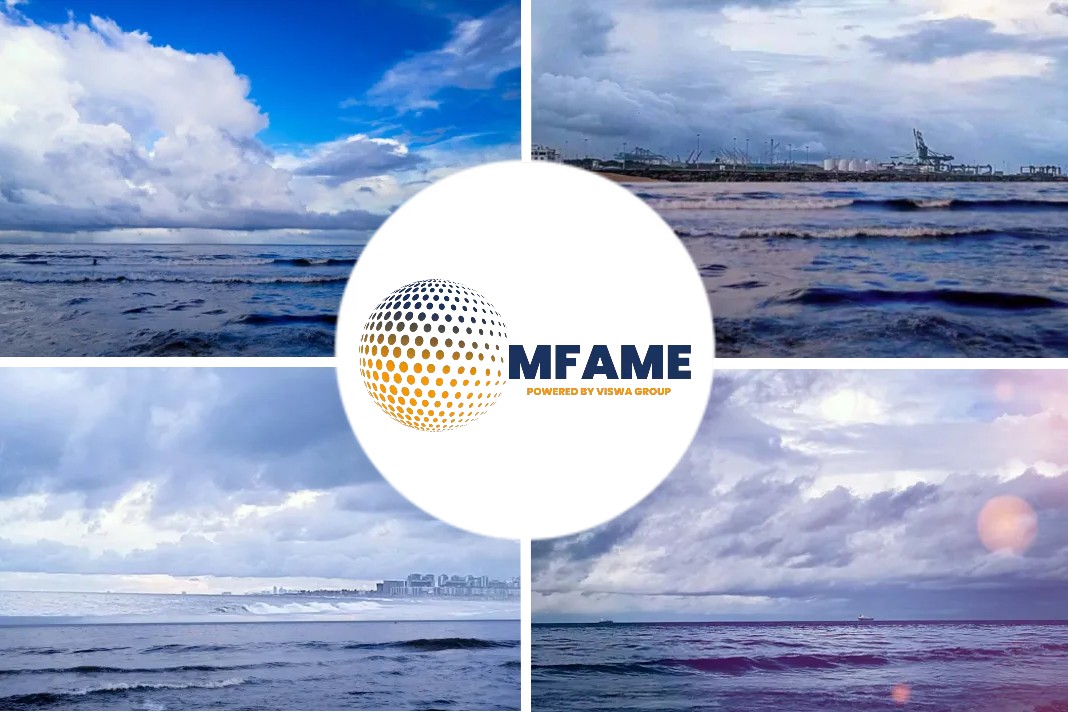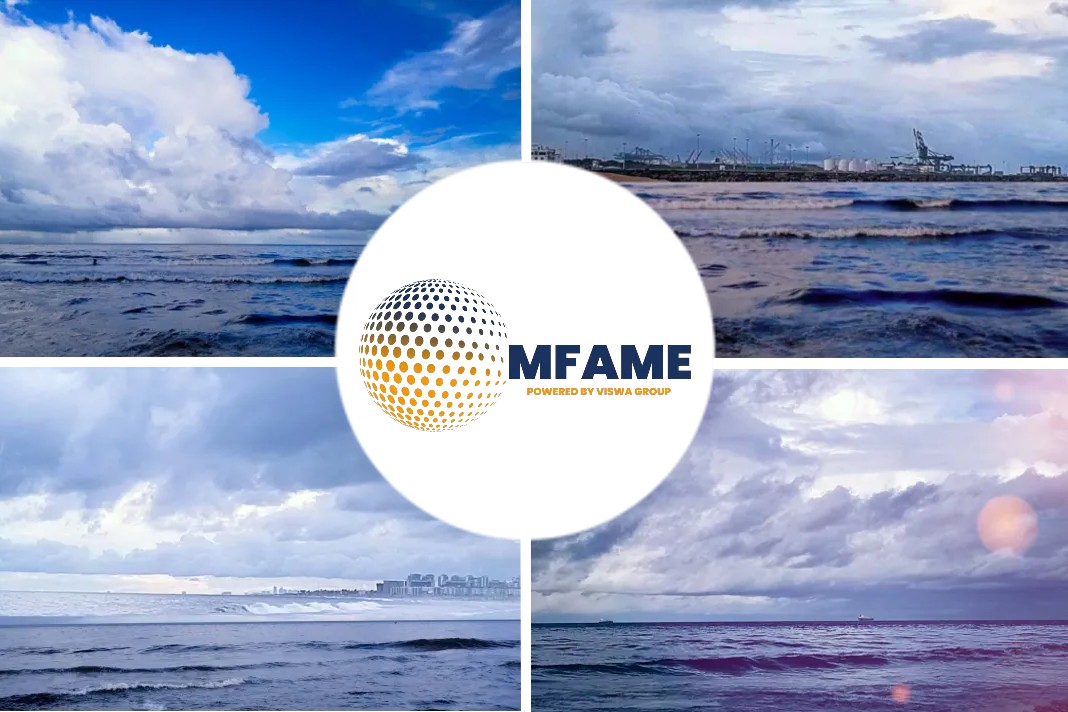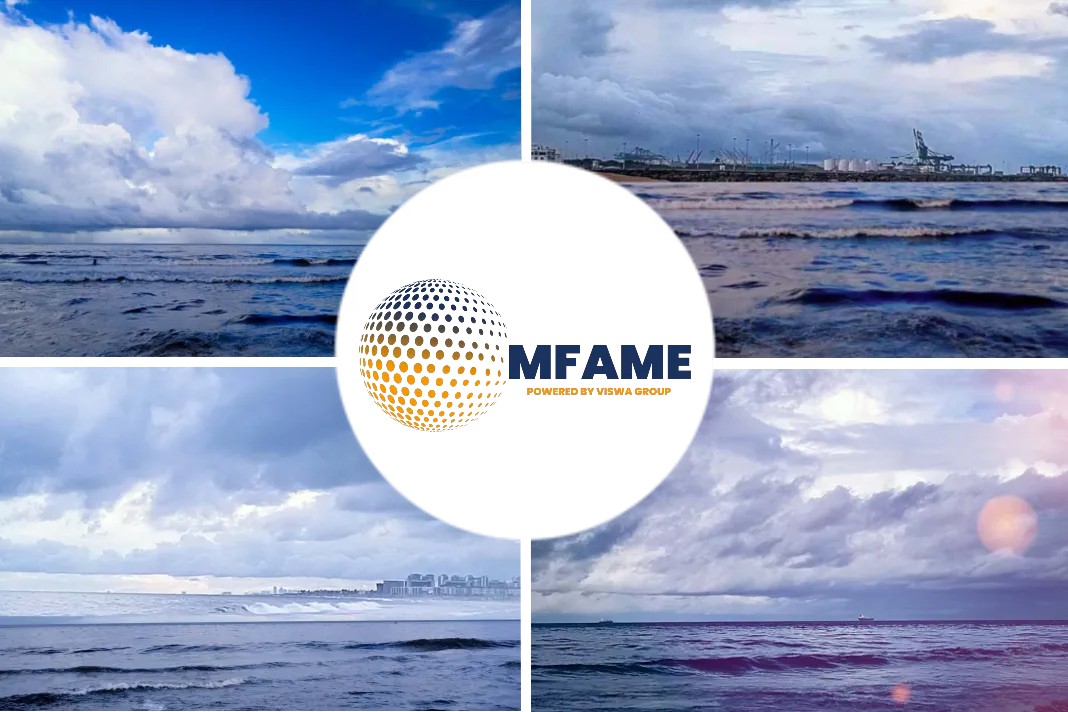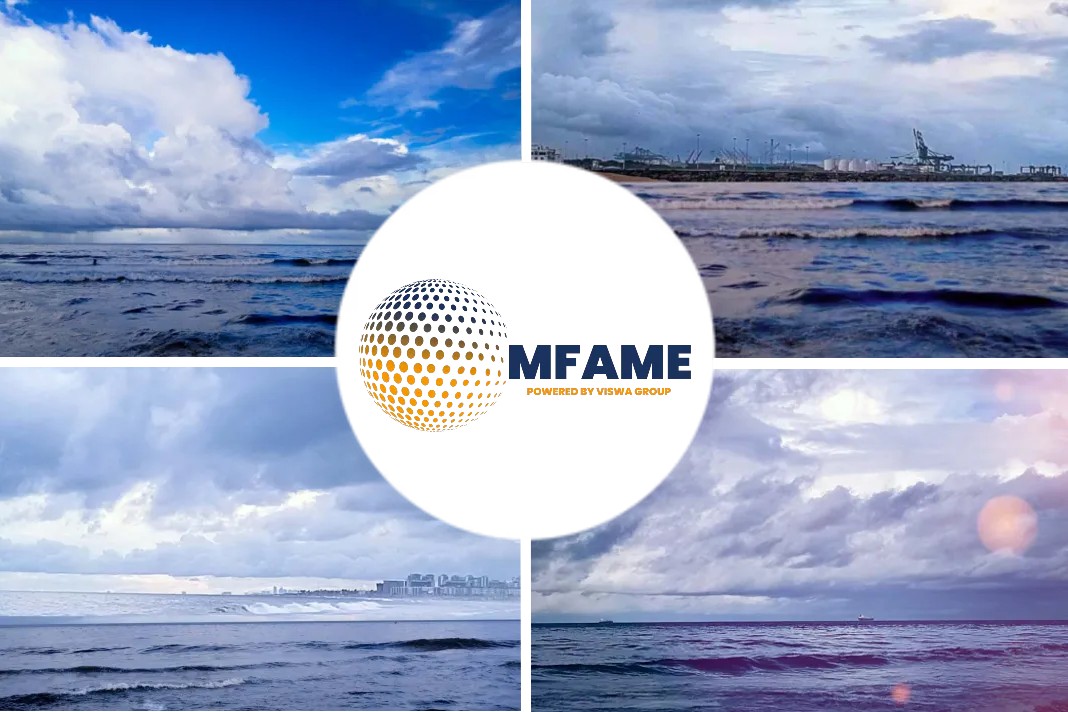Japan P & I Club released a P & I Loss Prevention Bulletin, volume number 40 in September 2017. The prevention bulletin deals with the case study concerning collision, engine trouble and oil spill accident.
This following case study reveals the effect of collision that takes place between a container vessel and cargo vessel, and the preventive measures that could have been followed to avoid to evade the collision.
Summary of Accident
The accident occurred at night off the north-northeastern sea coast of I-shima on the Kii Suido (Strait) while Vessel A was sailing southward on a course of <190>, after pilot disembarkation, having just passed Tomogashima Strait, when cargo ship B was navigating southeast on a course of <140> towards Kii Hinomisaki coast having passed the Naruto Strait.
In addition, as for the state of the surrounding environment at that time, there were no other ships in the vicinity, which would have affected either vessel’s operations, and there was good visibility.
When both vessels approached cutting across each other’s courses, the third officer of Vessel A noticed that there was a risk of collision with Vessel B due to the approach alarm sounded by the ARPA and informed that she (Vessel A) would pass the astern of Vessel B via VHF.
However, he continued to navigate on the same course and speed, with the exception of altering course to starboard 6 degrees.
Also, after the third officer of Vessel B noticed the Closest Point of Approach (CPA) which indicated zero on the ARPA, he altered course to starboard 5 degrees, but still sailed continuing on the same course and speed.
As a result, both vessels kept closing head-on to each other.
Although it steered immediately to avoid collision immediately before the collision, the starboard side bow of Vessel A collided with the port side astern of Vessel B.
Both vessels sustained damage to the hull, however, there were personal injuries. Please see Figs. 17, 18 and 19 and Table 20 for collision details and the actions that were taken by both Vessels.
Analysis of Accident Cause by Japan Transport Safety Board
Applicable Navigation Act
Japan Transport Safety Board determined Rule 15 (Crossing Situation) COLREGs to be the appropriate navigation act.
When two power-driven vessels are crossing so as to involve risk of collision, the vessel which has the other on her own starboard side shall keep out of the way and shall, if the circumstances of the case admit, avoid crossing ahead of the other vessel.
In addition, Rule 16 (Give-way Vessel) of COLREGs was applied to Vessel A and Rule 17 (Stand-on Vessel) was applied to Vessel B.
Rule 16: Action by Give-way Vessel
Every vessel which is directed to keep out of the way of another vessel shall, so far as possible, take early and substantial action to keep well clear.
Rule 17: Action by Stand-on Vessel
(i) Where one of two vessels is to keep out of the way the other shall keep her course and speed.
(ii) The latter vessel may however take action to avoid collision by her manoeuvre alone, as soon as it becomes apparent to her that the vessel required to keep out of the way is not taking appropriate action in compliance with these Rules. In this case, if the requirements of Rule 15.1 apply to these vessels, the stand-on vessel shall turn to port unless impossible.
(iii) When, from any cause, the vessel required to keep her course and speed finds herself so close that collision cannot be avoided by the action of the give-way vessel alone, she shall take such action as will best aid to avoid collision.
Five reasons for the cause of the accident
- Vessel A contacted Vessel B via VHF and informed of her intention to navigate in order to pass the astern of Vessel B. However, after only altering course to starboard 6 degrees, the third officer assumed that Vessel B had altered course to starboard side and navigated continuing on the same course and speed.
- After cadet A of Vessel A listened to the communication via VHF about the change of course to starboard side by both Vessels A and B, he could not see if Vessel B had altered course to starboard side on the ARPA monitor. Also, he considered it not sufficient enough to change heading course, and although he knew that the third officer had altered course to starboard by approximately 6 degrees, he did not advise and report this to the third officer (although, this was not the direct cause of the accident).
- The reason why Vessel A continued on the same course < 196 > and speed was, presumably, because, through communication with Vessel B via VHF, Vessel A understood that Vessel B was going to alter course to starboard, even if only slightly.
- After Vessel B discovered that the CPA was zero, indicated on ARPA, she altered course to starboard 5 degrees and set a new course to < 145 > , however, she sailed continuing on the same course and speed. That is to say, it is probable that the third officer may have been waiting for Vessel A to take action by giving way, which meant that Vessel A intended to navigate passing the astern of Vessel B mutually communicating with Vessel A via VHF.
- For both Vessels A and B, they did not adopt either warning signals or manoeuvring signals using whistles or flashing caution signal lights.
The root causes of the accident
- A failure to carry out the basic action of a look-out.
- A tendency to rely too heavily on ARPA, AIS, electronic charts and other
electrical equipment. - Although the Maritime Collisions Prevention Act (COLREGs) is understood, it
could not be put into practice on-site. - There was failure in implementing the BTM despite the presence of the A/B
(able seaman) and a cadet on the bridge.
In order to achieve improvements in the above, retraining in all of these areas is necessary. As obvious as it may appear, this is an important measure in order to prevent similar accidents occurring again.
Preventive measures
There were similarities in the specific behaviours of the Human Characteristics involved that led to the accident. If these specific behaviours can be eliminated, preventive measures can be formulated.
Preventive Measures for the Third Officers of Vessels A and B
- Re-education regarding the use of electronic aids
- Re-education of watch-keeping method
- Re-education of BTM
- Re-education for the safe operation of the ship
- SMS Manual evaluation of remedial action
Seafarers are always expected to operate their vessel in a safe condition, which never causes any accidents.
Did you subscribe to our daily newsletter?
It’s Free! Click here to Subscribe!
Source: Japan P & I Club






